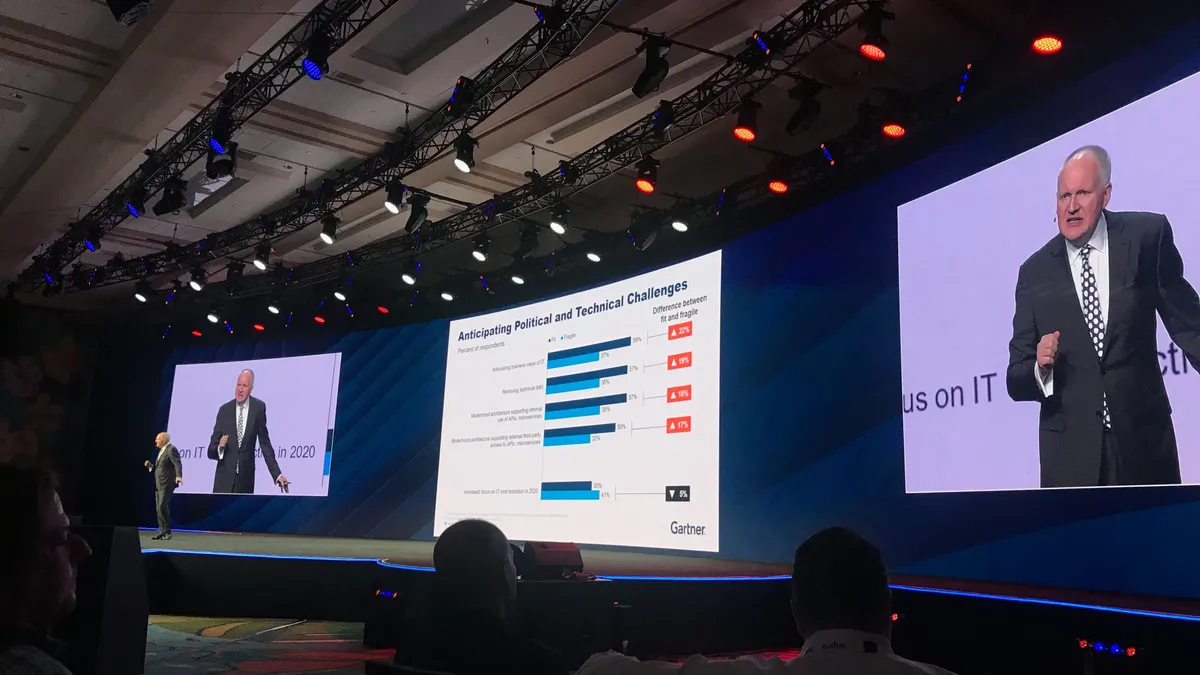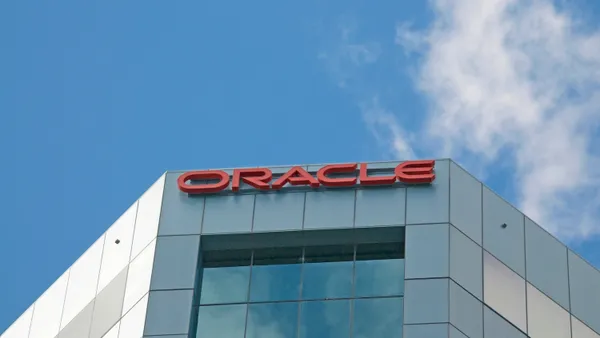ORLANDO, Fla. — Geopolitical tension, trade wars, recession threats, schisms in society, market volatility — each threatens the modern business and introduces uncertainty.
It's "scary for all of us" because IT leaders are expected to make long-term bets and set their organizations up for success, said Andy Rowsell-Jones, VP and distinguished analyst at Gartner, speaking Monday at Gartner IT Symposium/Xpo in Orlando, Florida.
Setting the tone for 2020, Gartner is focused on the forces of change and expected "turns" for the year ahead. Threats fall outside organizations' purview but have a profound impact on how they operate.
Worse, companies can no longer rely on technology as a competitive advantage. Gartner surveyed more than 1,000 CIOs and IT executives and found 40% of businesses have reached digital maturity.
"Digital is just business. It's not a differentiator anymore," Rowsell-Jones said. Businesses cannot spend their way out of the problem because turns absorb money.
Besides, IT budget growth is flat, with spending expected to increase 2.8% in 2020, in line with numbers since 2018.
Turns come in all shapes and sizes, but 90% of enterprises have faced them in the last four years, stemming from organizational disruption, operating cost pressure, "adverse regulatory intervention," funding shortfalls and changing consumer demands, according to Gartner research.
"Although a downturn is not the likely scenario through 2020, the risk is high enough to warrant preparation and planning," Rowsell-Jones said.
More than half of enterprises are untested by severe turns, the rest are filtered into two groups: the "fit" and the "fragile."
Not only do the fit effectively make it out of turns, they also can increase revenue and profit growth, Gartner research found. The fragile will survive, but they will likely fall behind and suffer during subsequent turns.
"Fit enterprises view IT as a point of leverage for the business," Rowsell-Jones said. They adapt funding for circumstances, centralizing funding in the event of a crisis but reevaluating models for the long term.
Attributes of fit vs. fragile companies
| Characteristic | Fit | Fragile |
|---|---|---|
| Centralize digital foundations | 89% | 80% |
| Centralize funding of general innovation | 75% | 66% |
| Have a responsive technology funding model | 53% | 30% |
Gartner
Fit organizations are highly adaptive and introduce a "factory approach to digital," said Rowsell-Jones. The factory has a predictable cost and strategy and value is earned by focusing on delivery value rather than the cost impact.
Organizations are tasking CIOs with becoming effective business leaders, comfortable with the financial aspects of running an IT organization. Running IT like a factory underpins this, setting a technology baseline that can support organizations in the event of near certain disruption.
CIOs should prioritize financial models because it fits into changing business models. Two-thirds of CEOs expect their business models to change and expect CIOs to help leverage technology for the adaptive business model, Saul Brand, Sr. Director Analyst at Gartner, speaking Tuesday at Symposium.
CEOs are interested in how your technology understanding will contribute to running the business, he said.
To become a more value added business technology executive, savvy leaders have to:
-
Evolve their skill sets
-
Become a co-creator and co-conspirator in developing business opportunities
-
Work to create a collaborative environment to drive the IT state
-
Weave in fresh ideas on how the business can leverage technology
Better aligning with the business requires adaptability and alignment with overarching business strategies. It speaks to effective proactive and reactive technology strategies, necessary for every enterprise in a volatile technology environment.















